High Street
100 years of shops and trades
By Sue and David Middleton
High Street extends from the junction with Pinfold Lane to the Rutland Arms corner and the junction with Belvoir Road.
The pattern and distribution of commercial activity has remained much the same over the last 100 years. Most of this activity has been concentrated in the section of High Street from Belvoir Road down to the Barkestone Lane – Albert Street intersection.
In the first part of the 20th century farming and Bottesford’s main building contractor, Horace Doubleday, were the main focus of commercial activity further up High Street westwards toward Nottingham.
Horace Doubleday’s premises were at what is now No. 67 on the south side of High Street opposite the Pinfold Lane junction.
‘The Book of Bottesford’ by Michael Honeybone indicates that this house was built for John Brewitt circa 1743. We know that the Brewitt family continued occupying this house because William Brewitt, a coal dealer, was living there in 1863.
When Horace Doubleday set up as a ‘builder and contractor’ is not known. However, between the two world wars this business was a significant employer in Bottesford. They also supplied and manufactured artificial stone and building blocks. It is remembered that they produced these in the 1920s to avoid laying off staff during the economic depression of those times. It is still possible to find walls made of these materials when walking around the streets of Bottesford and local villages.
In 1947 Mr. Doubleday was the builder responsible for the purchase and removal to Bottesford of the original V.C. Hall from Elton. In about 1950 all the Doubleday family, bar one, emigrated to Canada.
Until ‘The Thatch’ opened as a restaurant sometime after 1939 (please see ‘Eddie Houghton-Wards Memories of Bottesford 1939-1980‘) the only other major commercial premises in that direction was the garage site of Christmas and Chorlton. (Please click on the link for further details)
*
*
*
*
*
South side of the High Street
Belvoir Road to Barkestone Lane
The last hundred years has seen significant change at the eastern end of the High Street opposite the Rutland Arms.
The cottages in the photograph still stand on the corner of High Street and Belvoir Road. No longer commercial premises they have recently been incorporated into a new development of flats. The early 1900s photograph shows a cycle shop in the second cottage.
By the 1960s both cottages were combined into commercial premises. Full details are not available of all the shops and trades that have occupied this site in the last 100 or so years.
However, by the 1960s businesses included a wet fish shop and a greengrocers run by Mr. Smith.
This became a paper shop, run by the Newtons in the 1970s. Forbuoys of Nottingham took over the business and installed managers.
They also opened a second paper shop in Queen Street for a short period of time in the 1980s. The news agents transferred to the Spar shop opposite the Old Post Office, near the Barkestone Lane cross roads.
The building then housed a dress agency business before becoming the the offices of a local company.
The J.R. Mowers premises next door is a double fronted building with two large shop windows. In the directories of 1928, 1932, 1936 and 1942, the entries named Mrs Hannah Standley as the proprietor of the Rutland Café.
In operatic programmes of 1925 and 1926, an advert states that H. Standley is ‘a confectioner, caterer and grocer’. The Rutland Café was able to cater for large and small parties and was open on Sundays, thus able to cater for excursions and cyclists.
From 1947 until 1956, Mr. Montegriffo ran Monty’s Store and the Rutland Café. For further details please click on ‘A Letter from Margaret Montegriffo – Happy Memories‘.
A grocer, Cyril Roberts took over this shop and it has been reported that this was the first supermarket in Bottesford!
We have yet to establish if this was the location of R.W. & A Kirkham who advertised, in a 1968 edition of the Bottesford ‘Cross and Stocks’ magazine, as ‘Your friendly Mace grocer’ with ‘Regular fortnightly offers at reduced prices’ and ‘Self selection with the personal service’. By the early seventies, the shop was one of a number of antique shops in the village.
When the antique shop closed, Nigel Ensor opened Rainbow Insurance which included a branch of W.H Brown, an estate agent and the Anglia Building Society. This was in about 1981.
When Rainbow Insurance moved out, the shop had two businesses – women’s wear and ‘The Curtain Pole’ which sold home furnishings.
After being unoccupied, J. R. Mowers opened for business, selling and repairing mowers until December 2008. The premises has recently been converted back to a café. The exterior design is based on historic photographs made available through the Bottesford Living History project. ‘The Olde Rutland Café’ opened on the 21st February 2009.
The photograph taken sometime in the 1960s shows a yard and Standley’s cottages at the side of Monty’s Store.
These are now demolished.
The building which faced onto the High Street at the side of the cottages was the garage and a grocer’s shop, kept by Mr. Hart in the 1930s. Mr. Hart sold petrol, paraffin and oil. He also charged accumulators (electrical storage batteries) that were required for use in radios in those days.
Fuel prices in the 1936/1938 period seem nothing now. R.O.P. (Russian Oil and Petroleum Co.) was priced at eleven and a half pence a gallon i.e. five pence a gallon in today’s money. Shell and Esso were one old shilling a gallon i.e. five pence a gallon!
A 1926 advertisement states that Mr. Hart was ‘a grocer and General Dealer’. He sold tobacco and cigarettes, motor and cycle accessories, wireless parts of all descriptions, Dunlop and Michelin motor tyres (always in stock). Mr. Hart was also an agent for ‘Ingersoll’ watches and clocks and a receiving agent for the Lady Bay Dye Works.
Mr. Ottley followed Mr. Hart into the shop and sold provisions and groceries. He was in the shop when rationing ended and Michael Bradshaw remembers buying sweets without a ration book.
The house next to the shop had a passage and down the passage was the only public telephone in the village. There was a barred gate and if anyone wished to use the phone, you had to knock. The passage was also an approach to cottages to the rear of the shop. After the war, when housing was in short supply, the cottages were available for rent.
Mr. Silkstone (father of Mrs. Peggy Gamble of the Rutland) was a dentist who had a surgery on The Ropewalk in Nottingham. He also established a surgery in this building (his surgery sign is on the wall to the right of the passage) before he moved to Grantham Road.
The buildings were demolished in the late fifties and a garage was built.
In 1962, the garage belonged to Dick Sharpe.
By 1973, ‘Ted’ owned the garage and then it became Nicholls of Bottesford.
Gary Nicholls serviced and sold cars. He built a new car showroom on one part of the site and sold Renault cars.
When he stopped selling cars, the showroom was an office for Travel Case; a flower shop; and a bed and mattress showroom.
The site was sold around 2005 for redevelopment and is now a housing development.
Between the new houses and No.11 (the white cottage to right of Nicholls’ Garage) there is a ‘green lane’.
This lane was used by the owners of ‘Greenfields’ on Belvoir Road. Their horses and carts came out onto the High Street from the barn and paddock.
The aerial view of Nicholls’ Garage in the 1980s shows the redevelopment of the barns
Past No. 11 (once owned by the Sutton family), the bungalow (No.13) stands on the site of William Suttons house/shop. In a directory of 1899, William Sutton is entered as a grocer and a fellmonger. A fellmonger treats skins and renders down the fat. Mrs Dorothy Beedham recalls that her grandfather’s shop had closed down by the 1920s and William Sutton died in 1924.
*
*
*
*
*
*
*
*
*
*
*
*
*
There were 12 cottages, called Butcher Row, on the site where the Hands Walk bungalows are built.
Beyond the bungalows is the entrance to converted farm buildings. It was the entrance to the farm belonging to William Miller. He lived in the farmhouse and sold meat from a small building at the side.
In the past 35 years, the house has been a surgery for Dr. Spalding and Dr. Glencross; Hollands Bros Hardware; offices for Andrew’s-Weatherfoil; and Susan’s Flowers and Petfood.
The shop has now been converted back to a house.
The small building between No.23 and No.25 was the butcher’s shop run by William Miller and Son. It is possible that other butchers had had the same shop. In the 1901 census, William Miller is a butcher on the High Street – in 1881, a John W. Parr is entered as a butcher but there is no clue to his premises.
More recently, Eric George had his butchery business in this building. When he retired, it was used by the Post Office as a sorting office.
In 1912, Mr. White was the postmaster as well as being a grocer and druggist. In directory entries of 1916, Tom Silverwood had become the postmaster and according to directory entries, his daughter, Miss Eliza Ethel Silverwood continued to be postmistress until at least 1941. Mrs. Freda Dunwell was postmistress in the seventies followed by Mrs. Gloria Shawcross.
When the Post Office moved to the Spar shop, both the butcher’s shop and the Post Office were sold and became private dwellings.
*
*
*
*
*
*
*
*
*
*
Before W.J. Roberts’ offices were built on the High Street at the corner of Barkestone there was a row of cottages similar to the ones on Barkestone Lane that are visible in the aerial photograph. When the business of W.J. Roberts moved to Devon Lane, the site was taken over by Bullock and Driffill. They extended the site and were suppliers of wooden roofing trusses and other wood products. This firm moved to Staunton in the late 1990s and ceased trading in late 2008. The Barkestone Lane site was bought and redeveloped for housing.
*
*
*
*
*
*
*
*
*
*
*
*
*
*
*
*
*
Before the Duke’s Sale in 1921, Mr. Herbert Dunsmore lived in the house on the corner of Barkestone Lane. It was sold in the 1921 auction and Mr Charles Holloway and family lived in it and ran ‘A Tea with Hovis Café’ . During 1928, Charles Holloway was also listed as an antique dealer in a trade directory.
*
*
*
North side of the High Street
Rutland Arms to Albert Street
Photographs of the Rutland Arms in the twenties show that the wall around the present car park was much higher and there were double gates. Apparently there were also two derelict cottages in the yard.
During the last eighty years, the Rutland Arms layout was changed. Formerly a Victorian pub with bars and a function room the front door opened directly onto the High Street. In the 1980s and 1990s a series of renovations were carried out which included moving the main entrance and building the dining room.
William Henry Goodson and George Herbert Goodson Junior were landlords in the twenties and thirties, followed in the fifties by Jack and Peggy Gamble – Mrs. Gamble was the daughter of Mr. Silkstone the dentist whose surgery was opposite.
No. 4 High Street shows Reg Barke in the doorway with sign above. He was listed as a tailor in the 1908 Kelly’s Directory.
No.10 High Street was the home of Mr. F. Whillock, a house decorator in the twenties and thirties. (Mr. Whillock died in 1938 and his wife lived there until her death in 1956).
The National Provincial Bank, later to be known as the National Westminster Bank opened its premises in 1928. It was built by Horace Doubleday on land purchased from Mr Charlie Marshall.
The building stood on a piece of ground that was formerly part of a small paddock belonging to Mr. Charlie Marshall (traction engine driver) who lived at No. 14, the cottage adjacent to the Bank.
The paddock was walled off from the road. In addition it was the site of a shed where Mr. Arthur Wing used to do shoe repairs.
In the seventies the rear section was a fenced allotment and the front section became a car park for the bank.
The allotment area was sold in 1984, for the development of the Belvoir Vale Surgery when the Walford Close bungalows were built.
Since the Bank closed in 1997, the building has been a Physiotherapy and Fitness Centre (run by Alison Eaton), a ‘Jenny’s Gym’ (run by Jenny and Roger Hellen) and is now a hairdressing salon (run by Kirsty King).
The firm of Frank Norris and Sons had their yard at the back of Nos. 16 and 18 High Street.
No. 18 was built on the site of the previous building – a house with mud walls.
Ian Norris remembers that the firm used to slake lime in a large tank in the builders yard in order to prepare lime wash paint for houses.
The firm became John Norris and Sons, no longer wheelwrights but still builders and undertakers.
This family building firm was one of the two builders and undertakers in the village, the other being W.J. Roberts.
*
*
*
*
*
*
*
*
*
*
*
*
*
*
*
*
*
The present Spar Shop stands on the site of a shop that was once owned by a Mr Richardson in the early 1920s.
By the mid 1920s Frank Miller ran his grocery store there.
The shop stood directly onto the pavement without a forecourt.
His daughters the Misses Marjorie and Adeline Miller carried on the business until the late 1960s.
The Miss Millers sold cakes as well.
Miss Adeline Miller made the cakes.
It is still remembered that “they were delicious!”
The shop became a V.G. shop in the seventies, run by Elsie Walkling and Marjorie Manning and more recently a Spar shop, incorporating first the newsagents and then the Post Office.
Eddie Houghton-Ward (please click link for further details) remembers that at Vine House, the former home of Mr. and Mrs. W.J. Roberts, there was a forge.
The building on the corner of High Street and Albert Street was demolished.
It had been the Gas Show Rooms during the fifties before Mrs Parry from Easthorpe opened an antique shop in the ealry 1970s.
It may also have been a shoe repair shop and possibly a shop selling electrical goods.


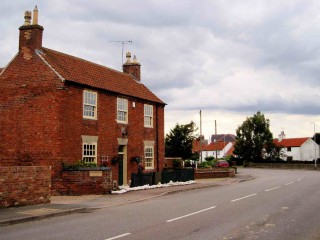
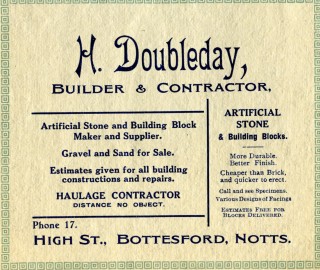
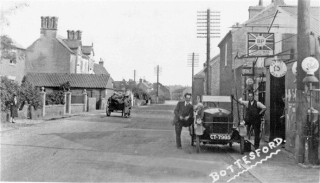
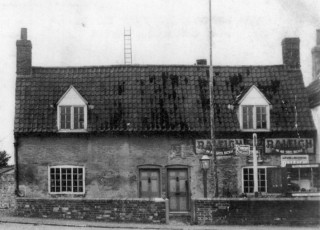
1-320x208.jpg)
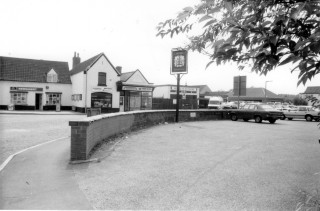
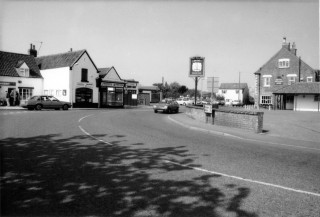
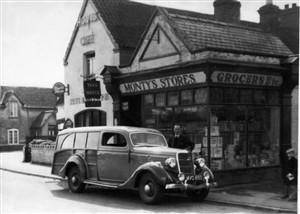
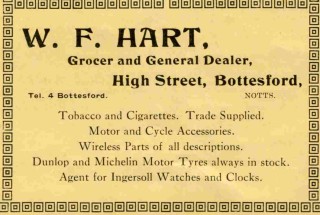
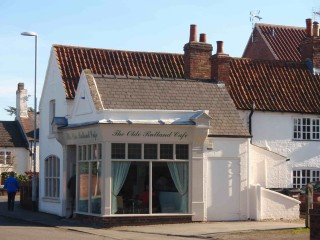
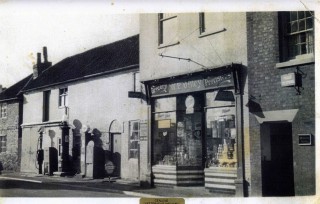
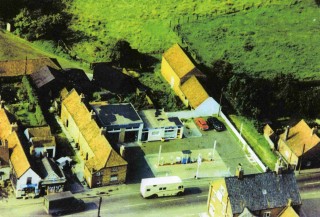
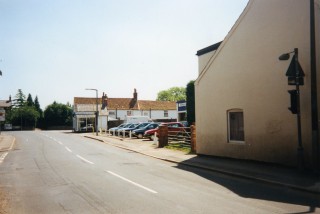
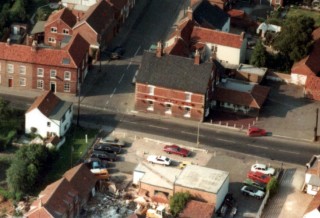
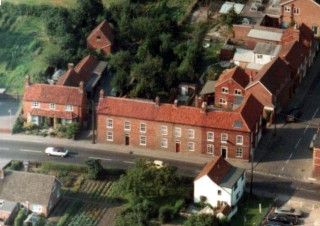
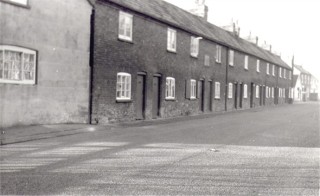
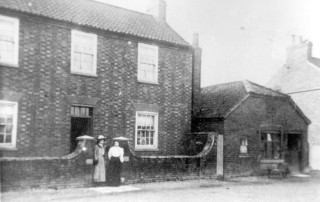
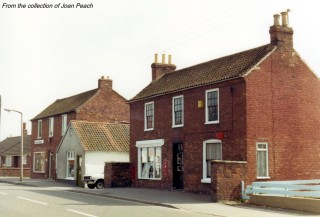
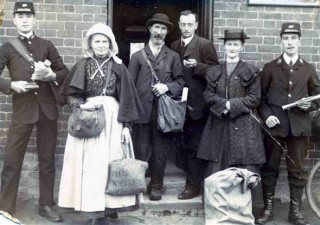
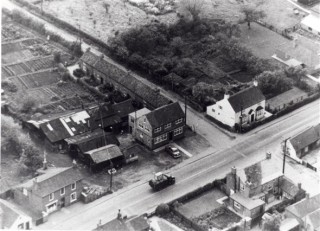
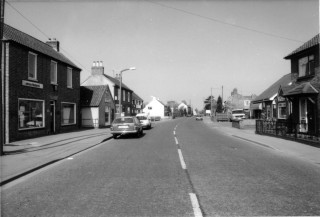
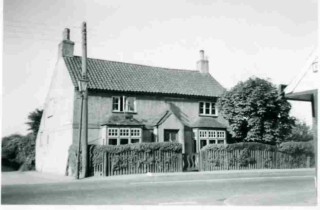
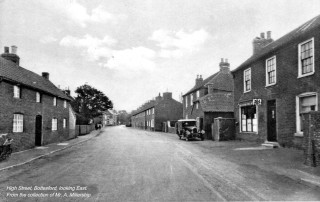
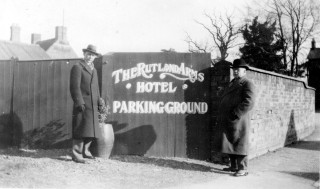
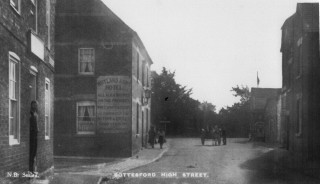
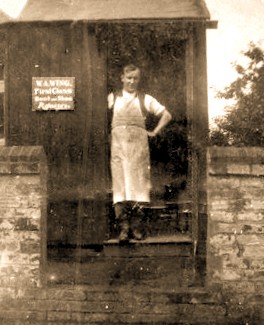
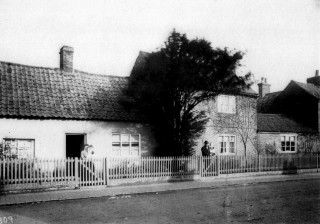
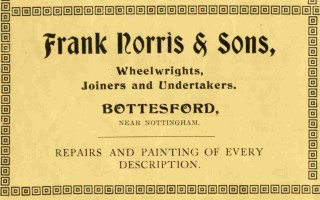

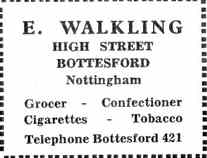
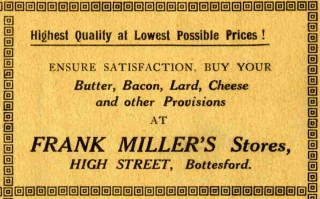
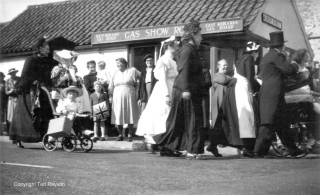








No Comments
Add a comment about this page